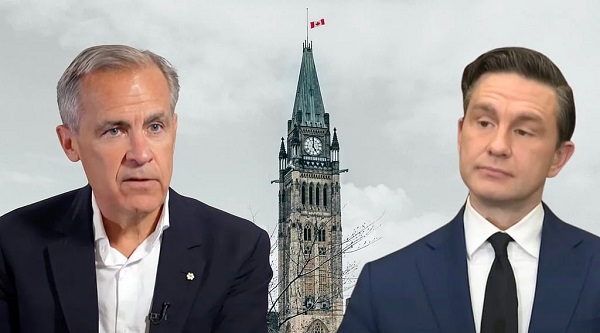Alberta
Province pours millions into bridging programs for foreign trained nurses

Investing in nursing skills training
Alberta’s government is investing $11 million in nurse bridging programs for internationally educated nurses.
There is a growing need for health care professionals to help address current and future demand throughout the health care system. Alberta’s post-secondaries play an important role in ensuring there are enough qualified nurses when and where Albertans need them.
Through this funding, internationally educated nurses will have access to an additional 1,221 spaces at post-secondary institutions so they can complete the programs they need for certification in Alberta.
“Investing in more seats in bridging programs helps internationally educated nurses get to work in our communities and meet Alberta’s need for highly skilled and dedicated health care workers. Our post-secondary institutions are valued partners in meeting that need, both in their home communities and across the province.”
This funding is enabling Alberta’s government to create 848 new registered nurse pathway seats and 373 new licensed practical nurse seats over three years to help nurses who were trained in other countries become licensed to practice nursing in Alberta. This builds on the more than 600 new seats for registered nurse and licensed practical nurse bridging programs announced in February.
“Adding additional seats for nurse bridging programs is a vital step towards addressing the growing demand for health care professionals in our province. Internationally educated nurses play a crucial role in meeting the health care needs of Albertans and this initiative will help them integrate more easily into communities across our province.”
“Lethbridge will play a major role in this program, as it is uniquely positioned with two leading post-secondary institutions that will be connected to almost one-quarter of the new seats and will help open opportunities for nurses outside of Alberta’s major centres.”
“The College of Registered Nurses of Alberta supports the announcement of the investment to create additional seats in bridging programs for internationally educated nurses. The college looks forward to seeing the impact this has on strengthening the health care ecosystem in Alberta.”
Alberta’s government is also investing $3 million for planning and design work at University Hall at the University of Lethbridge. Known for its award-winning design and being the first building built on campus, its former lab spaces will be modernized to better suit the needs of the growing university.
“Investments in initiatives that enhance Alberta’s health care system are of utmost importance. Access to a high-quality health care system not only promotes individual well-being but also plays a pivotal role in fortifying the resilience of Alberta’s communities.”
“We are always looking for innovative ways to enhance and expand program access for students. This is a great example of collaboration between the provincial government, the Lethbridge College and the University of Lethbridge.”
Quick facts
- The $11 million over the next three years will create 1,221 additional seats for nurse bridging programs at:
- $2.4 million – University of Lethbridge/Lethbridge College: 100 seats
- $2.6 million – Lethbridge College partnering with Bow Valley College: 108 seats
- $0.5 million – Bow Valley College: 96 seats
- $0.5 million – Northwestern Polytechnic: 96 seats
- $0.5 million – Portage College: 96 seats
- $0.5 million – Keyano College: 96 seats
- $2.4 million – MacEwan University: 364 seats
- $0.5 million – Keyano College partnering with NorQuest College: 40 seats
- $0.6 million – Red Deer Polytechnic partnering with NorQuest College: 135 seats
- $0.4 million – NorQuest College: 90 seats
- Under Budget 2023, Alberta’s government is also investing $7.8 million annually to fund non-repayable financial assistance for internationally educated nurses.
- Eligible internationally educated nurses can access as much as $30,000 over five years to offset the costs of nursing bridging programs, including tuition. The bursary is non-repayable for those who agree to live and work in rural Alberta as a nurse after graduation for a period of one year for every $6,000 in assistance provided.
- Budget 2023 investments at University of Lethbridge:
- Alberta’s government is investing $3 million in planning funding to improve the facility’s energy efficiency and operating sustainability.
- The funding will support the next phase of the destination project to repurpose vacant buildings and will look for opportunities to minimize greenhouse gas emissions and maximize energy efficiency – all to better meet the needs of students in the future.
- Budget 2023 invests:
- $1 million over three years to create 100 new seats in the bridge to Canadian nursing for internationally educated nurses program in collaboration with Lethbridge College.
- $0.6 million over three years to create 16 seats in the bachelor of nursing program in collaboration with Lethbridge College.
- $1.7 million over three years to create 40 new seats in the bachelor of science in computer science program.
- $0.3 million over three years to create 35 new seats in the graduate certificate in data science.
- Total: $3.6 million
- Budget 2023 investments in southern Alberta (University of Lethbridge, Lethbridge College and Medicine Hat College):
- Targeted enrolment expansion: $3.9 million to create 169 new seats in high-demand programs
- Tech talent funding: $2.1 million to create 135 seats in high-demand technology programs
- Internationally educated nurses:
- $2.4 million to create 100 new seats in a collaborative bridging program for internationally educated nurses at the University of Lethbridge and Lethbridge College.
- $2.6 million to create 108 new seats in the Bow Valley College practical nurse diploma program at Lethbridge College.
- Apprenticeship funding: $2.7 million to support seats for apprentices
- Capital maintenance and renewal funding: $10.9 million to update campus facilities and improve student experiences
- Total: $24.6 million
Alberta
‘Weird and wonderful’ wells are boosting oil production in Alberta and Saskatchewan

From the Canadian Energy Centre
Multilateral designs lift more energy with a smaller environmental footprint
A “weird and wonderful” drilling innovation in Alberta is helping producers tap more oil and gas at lower cost and with less environmental impact.
With names like fishbone, fan, comb-over and stingray, “multilateral” wells turn a single wellbore from the surface into multiple horizontal legs underground.
“They do look spectacular, and they are making quite a bit of money for small companies, so there’s a lot of interest from investors,” said Calin Dragoie, vice-president of geoscience with Calgary-based Chinook Consulting Services.
Dragoie, who has extensively studied the use of multilateral wells, said the technology takes horizontal drilling — which itself revolutionized oil and gas production — to the next level.
“It’s something that was not invented in Canada, but was perfected here. And it’s something that I think in the next few years will be exported as a technology to other parts of the world,” he said.
Dragoie’s research found that in 2015 less than 10 per cent of metres drilled in Western Canada came from multilateral wells. By last year, that share had climbed to nearly 60 per cent.
Royalty incentives in Alberta have accelerated the trend, and Saskatchewan has introduced similar policy.
Multilaterals first emerged alongside horizontal drilling in the late 1990s and early 2000s, Dragoie said. But today’s multilaterals are longer, more complex and more productive.
The main play is in Alberta’s Marten Hills region, where producers are using multilaterals to produce shallow heavy oil.
Today’s average multilateral has about 7.5 horizontal legs from a single surface location, up from four or six just a few years ago, Dragoie said.
One record-setting well in Alberta drilled by Tamarack Valley Energy in 2023 features 11 legs stretching two miles each, for a total subsurface reach of 33 kilometres — the longest well in Canada.
By accessing large volumes of oil and gas from a single surface pad, multilaterals reduce land impact by a factor of five to ten compared to conventional wells, he said.
The designs save money by skipping casing strings and cement in each leg, and production is amplified as a result of increased reservoir contact.
Here are examples of multilateral well design. Images courtesy Chinook Consulting Services.
Parallel
Fishbone
Fan
Waffle
Stingray
Frankenwells
Alberta
Alberta to protect three pro-family laws by invoking notwithstanding clause

From LifeSiteNews
Premier Danielle Smith said her government will use a constitutional tool to defend a ban on transgender surgery for minors and stopping men from competing in women’s sports.
Alberta Premier Danielle Smith said her government will use a rare constitutional tool, the notwithstanding clause, to ensure three bills passed this year — a ban on transgender surgery for minors, stopping men from competing in women’s sports, and protecting kids from extreme aspects of the LGBT agenda — stand and remain law after legal attacks from extremist activists.
Smith’s United Conservative Party (UCP) government stated that it will utilize a new law, Bill 9, to ensure that laws passed last year remain in effect.
“Children deserve the opportunity to grow into adulthood before making life-altering decisions about their gender and fertility,” Smith said in a press release sent to LifeSiteNews and other media outlets yesterday.
“By invoking the notwithstanding clause, we’re ensuring that laws safeguarding children’s health, education and safety cannot be undone – and that parents are fully involved in the major decisions affecting their children’s lives. That is what Albertans expect, and that is what this government will unapologetically defend.”
Alberta Justice Minister and Attorney General Mickey Amery said that the laws passed last year are what Albertans voted for in the last election.
“These laws reflect an overwhelming majority of Albertans, and it is our responsibility to ensure that they will not be overturned or further delayed by activists in the courts,” he noted.
“The notwithstanding clause reinforces democratic accountability by keeping decisions in the hands of those elected by Albertans. By invoking it, we are providing certainty that these protections will remain in place and that families can move forward with clarity and confidence.”
The Smith government said the notwithstanding clause will apply to the following pieces of legislation:
-
Bill 26, the Health Statutes Amendment Act, 2024, prohibits both gender reassignment surgery for children under 18 and the provision of puberty blockers and hormone treatments for the purpose of gender reassignment to children under 16.
-
Bill 27, the Education Amendment Act, 2024, requires schools to obtain parental consent when a student under 16 years of age wishes to change his or her name or pronouns for reasons related to the student’s gender identity, and requires parental opt-in consent to teaching on gender identity, sexual orientation or human sexuality.
-
Bill 29, the Fairness and Safety in Sport Act, requires the governing bodies of amateur competitive sports in Alberta to implement policies that limit participation in women’s and girls’ sports to those who were born female.”
Bill 26 was passed in December of 2024, and it amends the Health Act to “prohibit regulated health professionals from performing sex reassignment surgeries on minors.”
As reported by LifeSiteNews, pro-LGBT activist groups, with the support of Alberta’s opposition New Democratic Party (NDP), have tried to stop the bill via lawsuits. It prompted the Smith government to appeal a court injunction earlier this year blocking the province’s ban on transgender surgeries and drugs for gender-confused minors.
Last year, Smith’s government also passed Bill 27, a law banning schools from hiding a child’s pronoun changes at school that will help protect kids from the extreme aspects of the LGBT agenda.
Bill 27 will also empower the education minister to, in effect, stop the spread of extreme forms of pro-LGBT ideology or anything else to be allowed to be taught in schools via third parties.
Bill 29, which became law last December, bans gender-confused men from competing in women’s sports, the first legislation of its kind in Canada. The law applies to all school boards, universities, and provincial sports organizations.
Alberta’s notwithstanding clause is like all other provinces’ clauses and was a condition Alberta agreed to before it signed onto the nation’s 1982 constitution.
It is meant as a check to balance power between the court system and the government elected by the people. Once it is used, as passed in the legislature, a court cannot rule that the “legislation which the notwithstanding clause applies to be struck down based on the Charter of Rights and Freedoms, the Alberta Bill of Rights, or the Alberta Human Rights Act,” the Alberta government noted.
While Smith has done well on some points, she has still been relatively soft on social issues of importance to conservatives , such as abortion, and has publicly expressed pro-LGBT views, telling Jordan Peterson earlier this year that conservatives must embrace homosexual “couples” as “nuclear families.”
-

 Crime2 days ago
Crime2 days ago‘Modern-Day Escobar’: U.S. Says Former Canadian Olympian Ran Cocaine Pipeline with Cartel Protection and a Corrupt Toronto Lawyer
-

 National1 day ago
National1 day agoPsyop-Style Campaign That Delivered Mark Carney’s Win May Extend Into Floor-Crossing Gambits and Shape China–Canada–US–Mexico Relations
-

 COVID-1922 hours ago
COVID-1922 hours agoCovid Cover-Ups: Excess Deaths, Vaccine Harms, and Coordinated Censorship
-

 Great Reset12 hours ago
Great Reset12 hours agoEXCLUSIVE: The Nova Scotia RCMP Veterans’ Association IS TARGETING VETERANS with Euthanasia
-

 Bruce Dowbiggin23 hours ago
Bruce Dowbiggin23 hours agoBurying Poilievre Is Job One In Carney’s Ottawa
-

 Health1 day ago
Health1 day agoCDC’s Autism Reversal: Inside the Collapse of a 25‑Year Public Health Narrative
-

 Alberta2 days ago
Alberta2 days agoAlberta to protect three pro-family laws by invoking notwithstanding clause
-

 Alberta1 day ago
Alberta1 day ago‘Weird and wonderful’ wells are boosting oil production in Alberta and Saskatchewan










